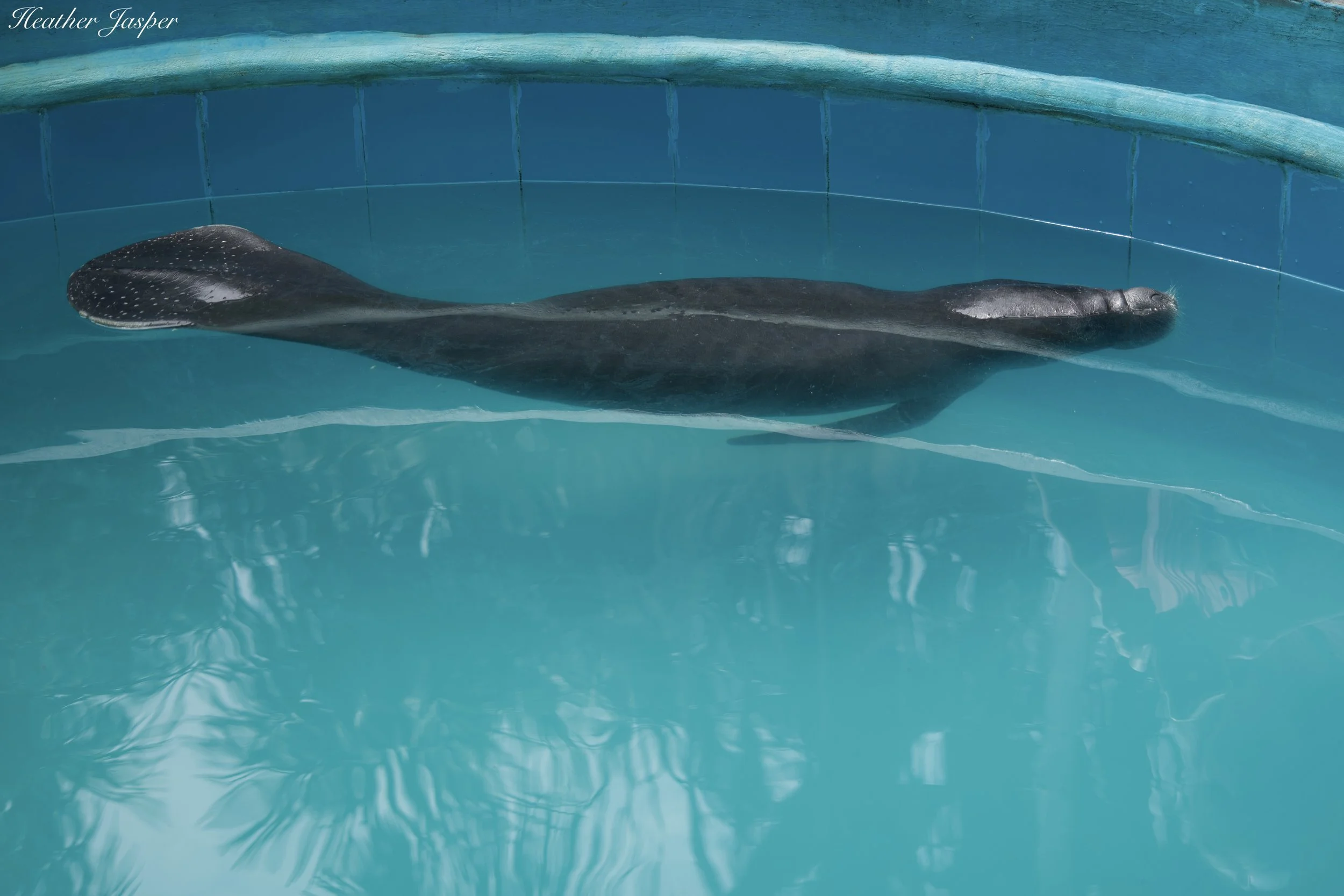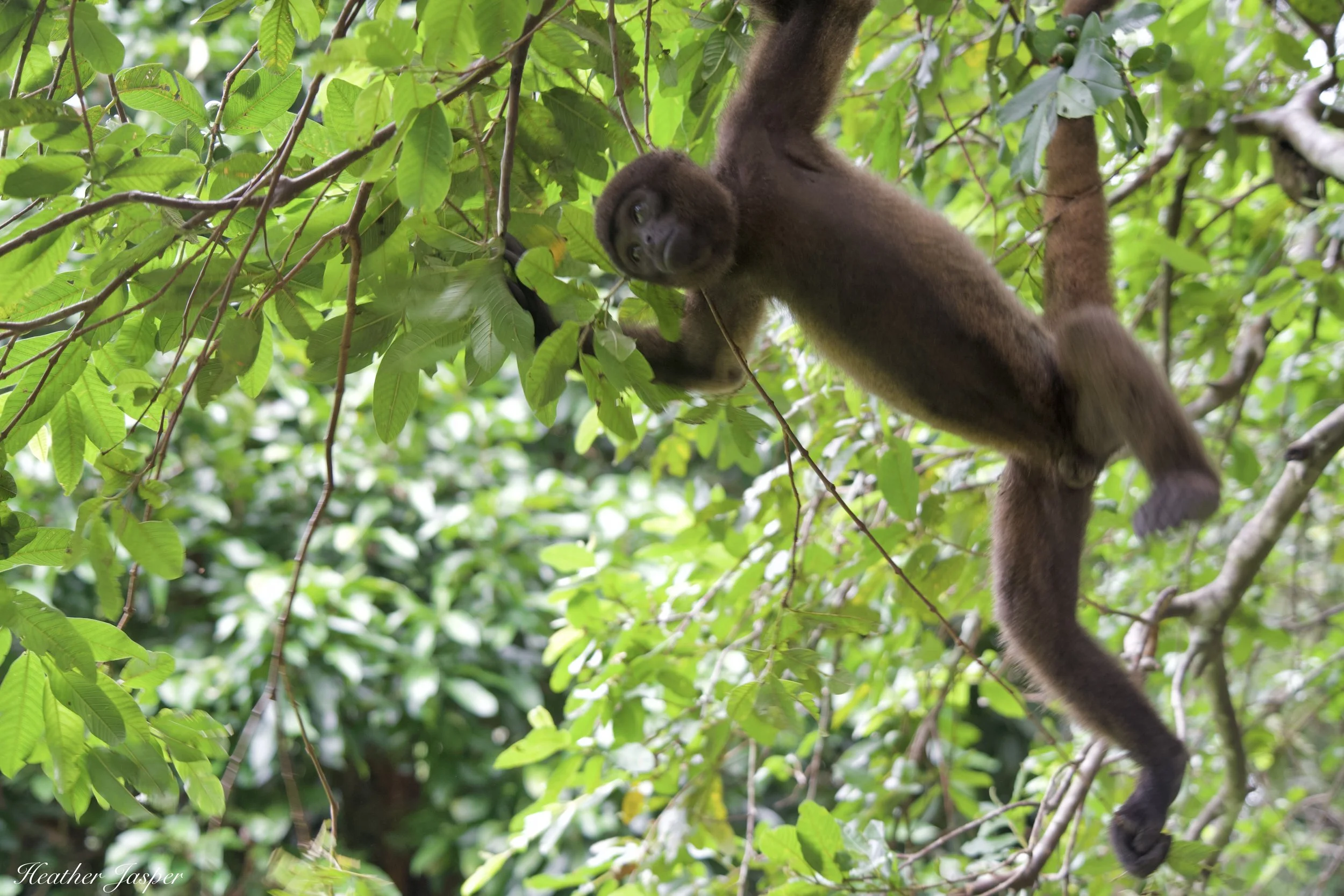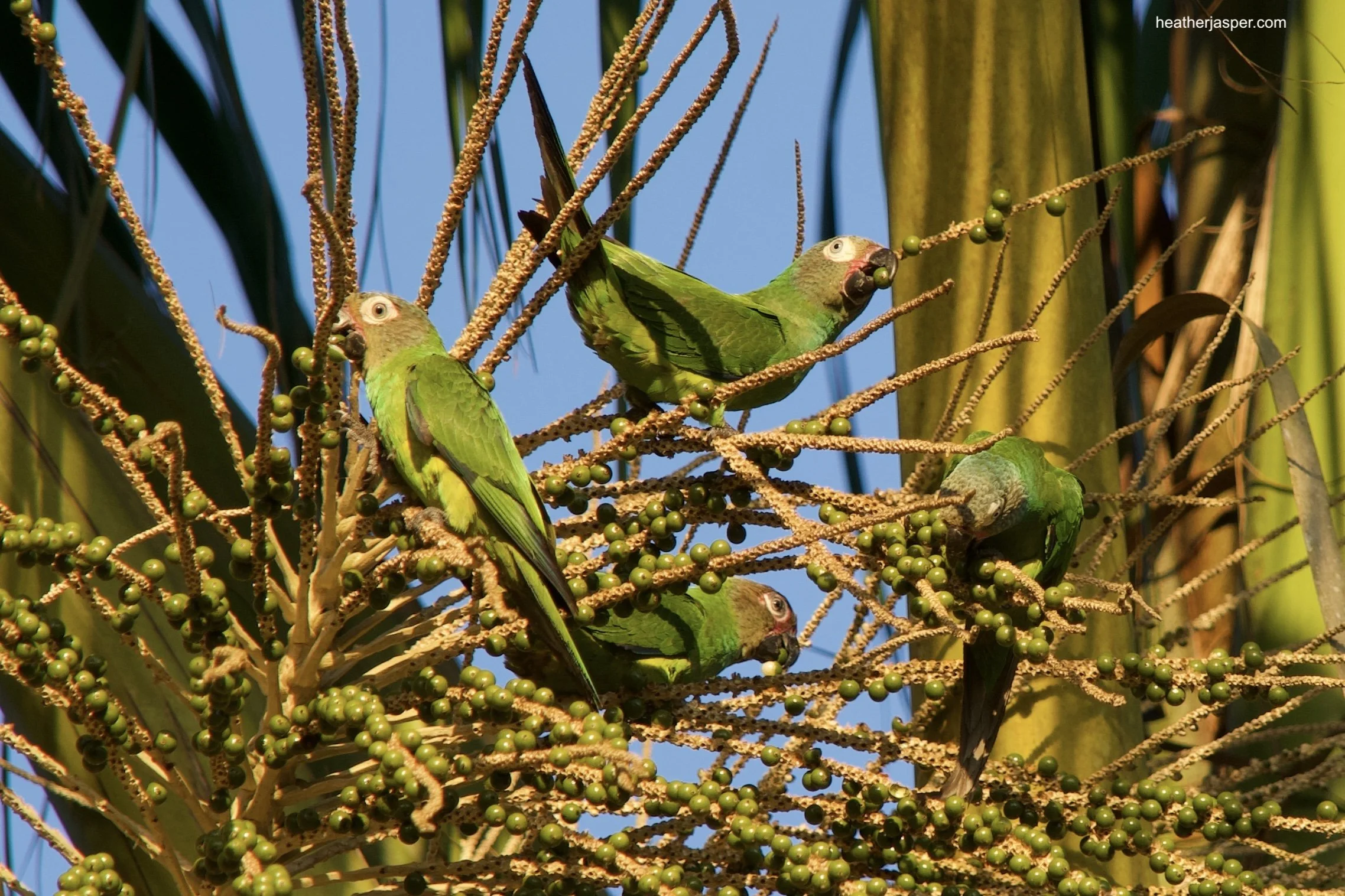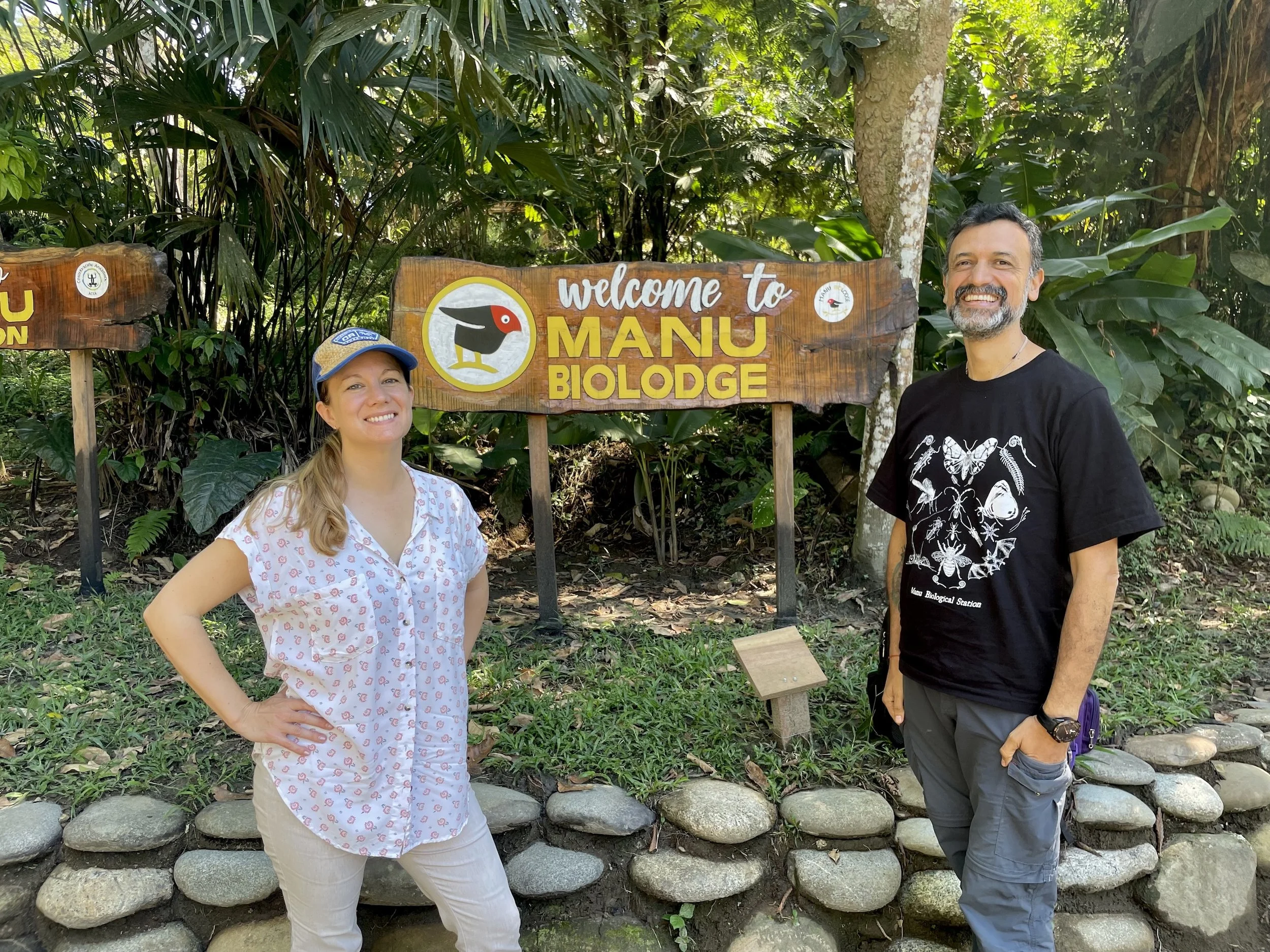Travel Tip 41
Five ways to tell if animal tourism is ethical.
Titi monkey at Isla de los Monos rescue center near Iquitos, Peru.
I love animals and I love seeing animals when I travel.
(This newsletter is a rerun because I’m out in the jungle working with Rainforest Expeditions this week. I expect that all my animal interactions on this trip will be authentic, but I’ll let you know how it goes in next week’s newsletter!)
Growing up in the Pacific Northwest, I didn’t have to think much about animal welfare when I traveled. I enjoyed seeing birds, deer, otters, and other wildlife when I was out camping, and I learned how to bear-proof my campsite. My parents taught me to not feed the cute chipmunks that scurried around camp because then they’d likely chew through my tent wall to see what else I had for them.
In the US, I observed animals in the wild and I learned to minimize my contact with wild animals.
Traveling in other countries, I’ve seen a lot of wild animals exploited for tourism.
This is so hard for tourists. People who love animals usually want to see animals when they travel. I’ve spoken with a lot of people who want to see happy, healthy animals but who don’t always know how to tell if an animal is happy and healthy. I’ve never met anybody who said they love animals, and they want to see animals harmed in tourist attractions.
Basically, that leaves you with rescue and rehabilitation shelters. You just can’t be sure animals aren’t being harmed unless the place is dedicated to helping animals.
I saw dozens of capuchin monkeys at Lago Sandoval during my last trip to Puerto Maldonado.
Here’s the top five ways to tell if an animal attraction is ethical or not.
1. Where does the money go?
For-profit companies have a mission to make money, usually at the expense of the animals’ welfare. If a place makes money from wild animals in captivity, avoid at all costs, even if that means telling your tour guide to change the itinerary. Nonprofits have missions and any nonprofit that works with animals should have a mission to help rather than harm.
2. Where do the animals come from?
If it’s not obvious on the website, email or call to ask these three questions:
Is this a shelter that accepts animals that the police or other experts rescue from the pet trade or dangerous situations? (You want this answer to be Yes). Do they breed wild animals, so they have animals tame enough to interact with humans? (The answer to this one should be No). Are their animals stolen from the wild and made to perform for tourists? (The answer to this one should be “Absolutely not, we would never do that!”).
Centro de Rescate Amazónico rescued this baby manatee from a family’s backyard pond, where it was severely malnourished. See the ribs?
3. What is their animal welfare policy?
Any tourist attraction should have a website that explains their animal welfare policy and practices. You want to visit places that rehabilitate animals for release to the wild. Unfortunately, some animals can’t be released.
I recently visited Centro de Rescate Amazónico, which rescues all kinds of animals. They have a giant anteater who was hit by a car and has a broken leg. Their vet realized that the surgery to fix her broken leg would come at a high risk of death, so it’s not possible to rehabilitate her to the point that she could be released to the wild. They’re currently raising funds to make her a prosthetic so she can at least bear weight on the bad leg and walk more comfortably. Click on the link above to donate.
4. Do people have contact with wild animals?
It’s too easy for animals to get sick from contact with humans. (Remember when everybody was worried about giving their dog Covid?) Wild animals in rescue shelters should only be touched by employees and long-term volunteers who have gone through a quarantine process.
This is really hard. At Isla de los Monos, several monkeys who roam free on the island ran over to me and climbed up to perch on my shoulder or head for a while. That’s not healthy for the monkeys, but what was I going to do? Yell at them and scare them so they didn’t climb up on me? That would make me feel horrible, even if it might be better for them.
On my trip in the Amazon near Iquitos, a guide offered to catch a caiman so I could see it up close. I told him that I don’t think people should touch wildlife and he seemed relieved. It made me wonder how many tourists demand that the guides catch wildlife so they can touch them.
We kept a respectful distance from his squirrel monkey. I have a good camera, so it looks like I got too close.
5. Are there any certifications that show they treat animals ethically?
The gold standard is the Global Federation of Animal Sanctuaries. A shelter might still be legit even if they don’t have any certifications, because it can be a lot of paperwork to get certified and not every shelter has the time and resources to go through a certification process. If they don’t have a certification, that just means that you have to spend more time doing your own research.
In an ideal world, rescue centers wouldn’t need to fundraise from tourists.
If animal rescue centers were fully funded by governments and private grants, they wouldn’t need tourists to visit the animals. Tourism could focus on just seeing animals in the wild, where they’re free to sit still and let us watch or run away.
That’s not the world we live in.
The reality for many of these rescue shelters is that they are chronically underfunded and turn to tourism as a source of income. They need tourists to pay the entrance fee and also give extra donations to pay for food and medical care for the animals. Tourists not only donate, they also spread the word (like me) to ask others to donate. Please donate to at least one of the places linked in this blog!
This young Woolly Monkey at Isla de los Monos will be released when they have funds to do so safely.
Releasing animals is also expensive.
At Isla de los Monos, it costs about $80,000 USD to release a group of monkeys. They have to pay for a special boat from the island to Nauta, then a truck to the Iquitos airport, then a special plane to fly the monkeys to a remote area where they won’t be recaptured. The monkeys require medical care on the way and experts who know how to properly release wildlife. It adds up quickly.
Want to know more?
The Zero to Travel podcast recently featured Kristen Diederich, an expert on ethical wildlife tourism. Listen here!
You can also check out the Pan African Sanctuary Alliance, World Cetacean Alliance, World Animal Protection’s list of elephant-friendly facilities and their list of companies that have taken a wildlife-friendly pledge.
Dusky headed parakeets at Los Amigos Research Station, one of the Conservación Amazónica stations.
Blog
The Peruvian Amazon near Puerto Maldonado
This blog is from my first trip to Puerto Maldonado and has information about a monkey rescue center, a research station and several lodges. I’m going back to a few of the same places this week and will also see two new lodges and one new research station.
Me and Alejandro Lopera-Toro who is leading the dung beetle study at Manu, another of the Conservación Amazónica stations.
Article
How dung beetles collect DNA for science
This recent article was so much fun to research. I had no idea how much information scientists could get from dung beetles! I’m hoping to find an equally interesting study at the Tambopata Research Station this week.








